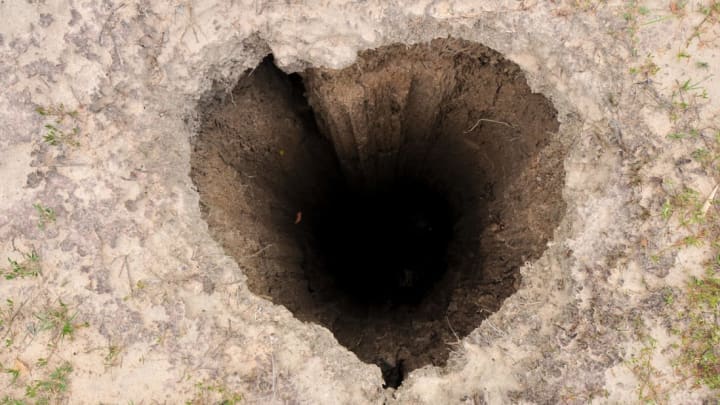In 1970, Soviet scientists started drilling the Kola Superdeep Borehole in Murmansk, Russia. They wanted to learn about Earth's crust, and they wanted to beat American scientists who had abandoned their Project Mohole in 1966.
After 24 years of digging, and several branches in the hole, the deepest branch of the Kola Superdeep Borehole stopped in 1994 at 12,262 meters (about 7.5 miles). It's only nine inches in diameter at the bottom. It is still the deepest hole in the world, and the process of drilling was incredibly difficult. (For reference, the Mariana Trench is approximately 10,994 meters deep at The Challenger Deep—and it's not a drilled hole.)
Interestingly, Kola is not the longest hole; in May 2008, an oil well earned that record, though it's nowhere near as far underground.
So what did scientists find at the bottom of the hole? First, there's lots of water down there—though it may be formed from stray oxygen and hydrogen atoms squeezed out of rock minerals. Second, there are plankton fossils as deep as 6700 meters. Third, it's incredibly hot—more than 350 °F. For all the effort and decades of work, this hole only went 0.2% of the way to the center of the Earth!
For more on the findings, here's a SciShow video summarizing the project and its findings (plus the fact that it's "marked" today by a crumbling shack and a little well cap, shown above):
